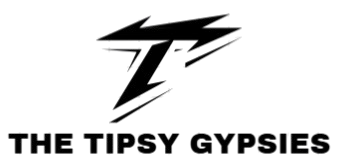Ashcroft Capital Lawsuit: Breaking Down the Legal Storm
Ashcroft Capital lawsuit has become one of the most discussed legal battles in the real estate investment space. Known for its large-scale multifamily property syndications, Ashcroft Capital has been a trusted name for thousands of passive investors. However, recent legal allegations have placed the company under intense scrutiny, raising critical questions about compliance, transparency, and fiduciary duty.
Who Is Ashcroft Capital?
Ashcroft Capital is a U.S.-based real estate investment firm co-founded by Joe Fairless. It has gained national attention for its apartment syndication model, primarily targeting value-add multifamily assets in emerging markets. With over $2 billion in assets under management, the firm has partnered with thousands of accredited investors looking for passive income and long-term growth.
Ashcroft’s model involves acquiring older apartment complexes, renovating them, and improving operational efficiencies to increase property value and rental income. Their investments are typically held in LLC structures with monthly or quarterly distributions to investors.
However, the company’s smooth trajectory has been interrupted by recent lawsuits, shaking confidence among some of its investors.
Details of the Ashcroft Capital Lawsuit in 2025
The Ashcroft Capital lawsuit centers around multiple allegations that surfaced in late 2024 and gained traction in early 2025. While details vary between lawsuits and legal complaints, here are the main themes that have emerged:
1. Misleading Financial Projections
Several plaintiffs allege that Ashcroft provided overly optimistic or inaccurate financial forecasts during investor presentations and in offering memoranda. This has led some to claim that the risks of certain deals were underreported.
2. Poor Disclosure Practices
Another point of contention is the alleged failure to disclose key details about occupancy rates, renovation delays, and operating expenses. Some investors claim they were not updated about critical project issues until after it was too late.
3. Distribution Irregularities
According to court filings, certain investor groups stopped receiving scheduled distributions without clear explanations. Questions have been raised about whether operational income was being managed in alignment with the legal terms of the operating agreements.
4. Breach of Fiduciary Duty
At the heart of the lawsuit is a claim that Ashcroft Capital violated its fiduciary responsibilities by allegedly placing firm interests above those of the investors. These include accusations of self-dealing and conflicts of interest.
5. Securities Law Violations
Some claims also suggest violations of SEC rules related to unregistered offerings, misrepresentation, and non-compliance with investment disclosure standards.
Ashcroft Capital’s Response to the Lawsuit
Ashcroft Capital has strongly denied all allegations. In a public statement issued in May 2025, the firm stated that it has consistently operated in compliance with industry regulations and investor agreements.
“Ashcroft Capital values transparency and investor trust. We believe these lawsuits are baseless and are confident that the legal process will confirm our integrity and professionalism.” – Ashcroft Capital Representative
The firm has also announced steps to improve investor communication and reporting, including third-party financial audits and revised disclosure protocols.
How Did This Happen?
Many in the real estate syndication community are now asking: how did such a respected firm end up in legal trouble?
Analysts point to several factors:
Market Volatility: Rising interest rates and inflation have significantly impacted operating margins, particularly for value-add properties acquired at peak pricing between 2021 and 2023.
Overleveraging: Some of Ashcroft’s properties were reportedly financed using aggressive debt structures, leaving little room for error.
Underestimated Risks: Investors were not always fully briefed on market-specific risks or cost overruns tied to renovations.
While none of these factors alone suggest wrongdoing, they contributed to investor dissatisfaction, especially when promised returns failed to materialize.
Investor Reactions and Industry Impact
The Ashcroft Capital lawsuit has sparked concern among both active and passive real estate investors. For those with capital tied up in Ashcroft deals, the uncertainty has created anxiety over the safety of their investments. Some have joined class action suits, while others await further clarification.
This controversy is also affecting the broader investment syndication industry. Platforms that connect sponsors to passive investors are tightening due diligence procedures. Meanwhile, smaller sponsors are facing increased pressure to improve transparency and documentation to avoid similar legal risks.
Lessons for Real Estate Investors
Regardless of the outcome, the Ashcroft Capital lawsuit provides key takeaways for anyone considering real estate syndications:
1. Always Vet the Sponsor
Even if a sponsor is well-known or popular online, it’s essential to check their track record, legal history, and third-party reviews.
2. Read the Fine Print
Understand the operating agreement, especially clauses related to fund usage, distributions, and exit strategies.
3. Track Performance Yourself
Don’t rely solely on investor updates. Compare expected vs. actual performance using public property records, rent data, and local market trends.
4. Watch for Overpromising
If a sponsor is promising double-digit annual returns with minimal risk, consider it a red flag. Real estate always carries inherent risks.
What Happens Next?
As of July 2025, several lawsuits are still in motion. Some may settle out of court, while others could go to trial later this year. Industry insiders expect the Securities and Exchange Commission (SEC) to evaluate whether any violations occurred, especially in relation to disclosure and investor protection rules.
Ashcroft Capital has not announced any plans to cease operations, but their reputation is undeniably under pressure. Whether they recover fully may depend on legal outcomes and investor sentiment moving forward.
Conclusion
The Ashcroft Capital lawsuit marks a pivotal moment in the world of passive real estate investing. It highlights the critical importance of transparency, investor communication, and risk management.
While Ashcroft maintains its innocence and continues to operate, the situation serves as a strong reminder that no investment is truly passive if you don’t stay informed. For current and future investors, the best path forward is to remain educated, diligent, and cautious—especially in a market as dynamic as real estate syndication.






